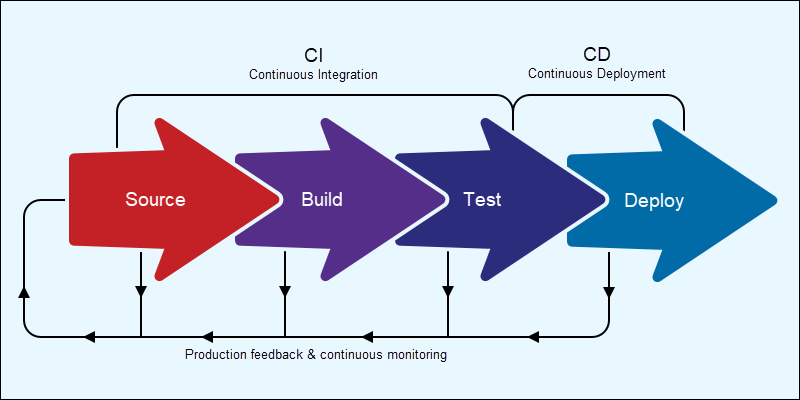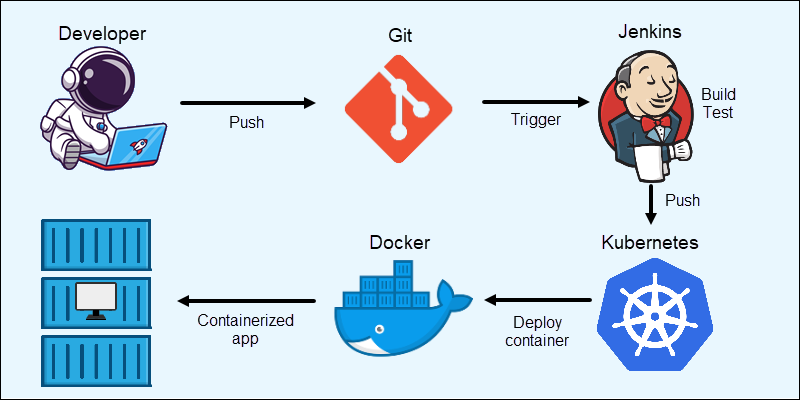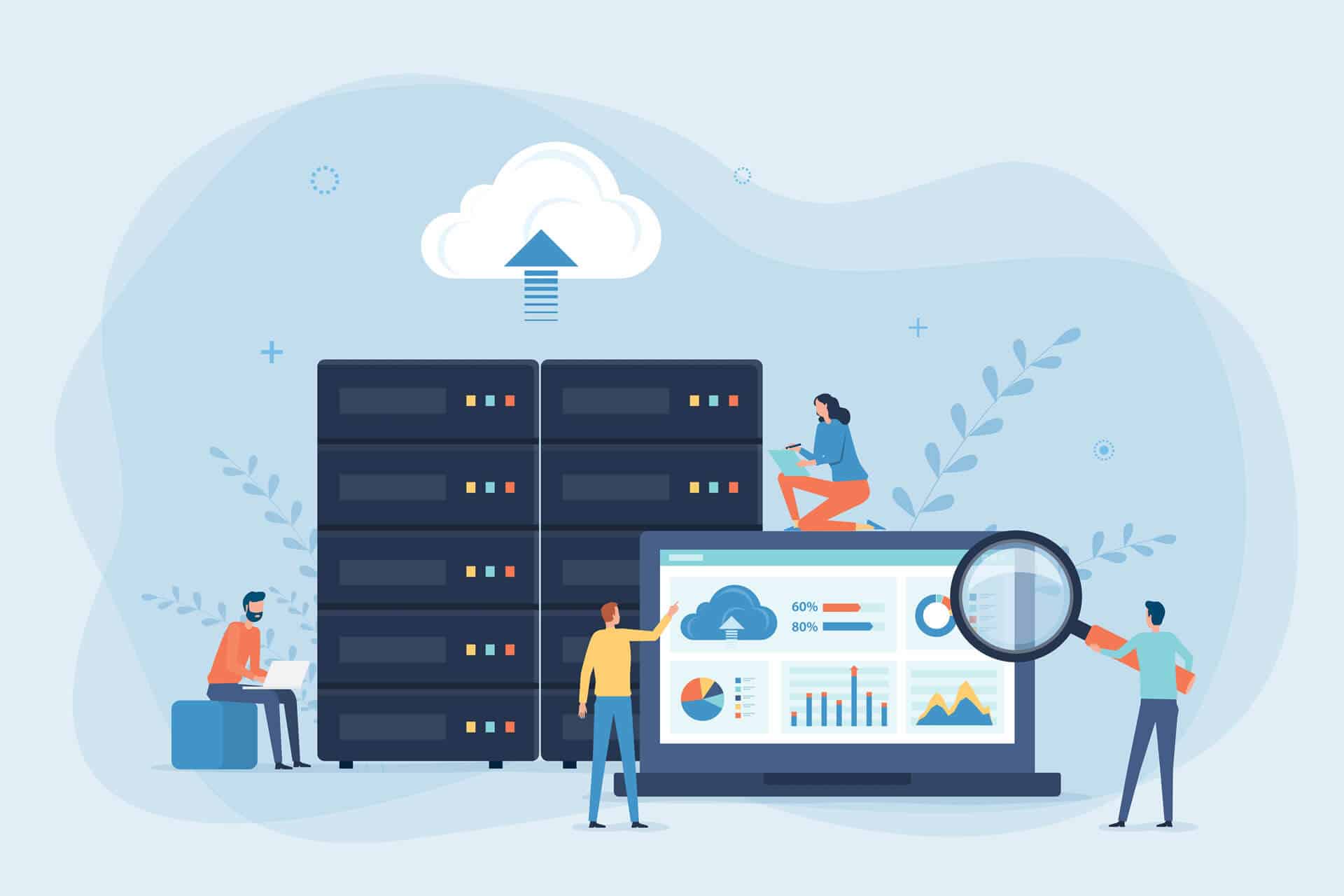A CI/CD pipeline is a set of practices that creates a connection between development and operations. By automating operational procedures in the software development lifecycle, fault discovery happens early, productivity increases, and the delivery to the end-users is faster.
As a result, teams push stable software updates more often and create an agile DevOps workflow. CI/CD is the reason software updates happen quickly and efficiently.
This post provides an overview of the main concepts and elements in the CI/CD pipeline.
What Is a CI/CD Pipeline?
The CI/CD pipeline is the continuous integration, delivery, and deployment workflow. The pipeline triggers various processes during the development stages through a configuration file.
The pipeline focuses on using CI/CD automation tools. On the other hand, a DevOps pipeline focuses more on responsiveness, highlighting the importance of input from different DevOps roles and responsibilities.
The ideal combination of DevOps principles and pipeline automation creates an environment for continual software delivery.
Stages of the CI/CD Pipeline
The CI/CD pipeline goes through the necessary steps before delivery for each software change. If any of the stages fail, the event triggers a notification and informs the whole team (typically via E-mail).

The pipeline divides into a four-stage process. Each step has a specialized purpose of ensuring consistency, quality, and speed of delivery. An organization may add additional steps depending on project details.
1. Source
Development teams use version control systems, such as Git. These systems store code in a centralized repository. As a result, tracking changes, collaborating, and securing the source code becomes a breeze.
CI assumes repository changes happen at least daily, if not more often. In the pipeline, source tracking is the base step in the pipeline automation process. Monitoring changes and triggering events based on actions provides better control over the source code.
Automating the source ensures the team stays informed of any changes and problems with the code. Pinpointing the issue and advising the team allows developers to act quickly and resolve issues in no time.
2. Build
The build stage combines the source code with dependencies. The result is an instance of the software potentially ready for end-users.
This step includes compiling code for languages like Go or Java. In this case, the action requires special build tools such as Maven, Ant, or Gradle. Interpretive languages such as Python or Ruby do not require such tools.
The build stage ideally runs in a clean and isolated environment, and developers run the code in containers or VMs.
Check out how DevOps and virtualization work together to create flexible and consistent environments.
3. Test
The testing stage in the pipeline involves a tremendous amount of automation, and continuous testing ensures the pipeline discovers issues during the development stages. Various automation testing tools help make this process easier.
The tests run across different devices and environments. The earlier, the better. The testing stage automates performance, integration, functional, and regression tests. Using both white box and black box testing yields the best results.
Discovering bugs as quickly as possible brings two benefits:
1. The issues do not reach the end-user, resulting in improvement in user experience.
2. The developers find it easier to fix a bug while the code is still fresh. Addressing issues as early as possible makes debugging less costly.
4. Deploy
The final stage in the CI/CD pipeline is deployment. After the software passes all the tests successfully, the program is ready for a production environment. Various deployment strategies exist, including assessing a few nodes or providing software versions.
The key aspects to consider automating during the deployment stage are:
- Deployment and code migration security through container orchestration tools such as Kubernetes or Docker Swarm.
- Configuration file and permission management through tools such as Puppet or Chef.
- Template infrastructure creation and management between environments through IaC provisioning tools such as Terraform.
The phoenixNAP Bare Metal Cloud servers come with custom-built IaC modules. Server provisioning and management tools, such as Terraform, Puppet, Ansible, and others, integrate fully with the BMC servers. Choose one of the many pre-configured instances and deploy a BMC server in minutes on dedicated hardware to kick start your development project!
CI/CD Pipeline Example
A CI/CD pipeline consists of many programs and components. The components and steps differ depending on the use case.

Below is an example pipeline for deploying a Kubernetes cluster:
- Multiple developers connect to a version control system, such as Git. Each change and update to the source code triggers an action in a CI/CD tool and begins the pipeline process.
- The central CI/CD integration system, such as Jenkins, builds a Docker image. Additionally, the tool runs various tests on the software. Once all the trials and verifications pass, the integration system pushes the created image into a Kubernetes cluster.
- The Kubernetes cluster prepares and deploys Docker containers for the software build.
- Lastly, Docker containerizes the software and ships the components for integration.
The above example demonstrates the complex process behind the pipeline. Failure at any of the steps informs the developers of the issue immediately. Enhance the pipeline further by adding CI/CD pipeline security and monitoring throughout the different stages to create a DevSecOps environment.
Important CI/CD Pipeline KPIs
A faulty implementation of a CI/CD pipeline hinders the development process and slows the whole team down. To see whether the implemented pipeline strategy performs well, consider the following key performance indicators (KPIs):
1. Code quality. Static code analysis tools and various IDE plugins help quantify the code quality. Tracking the quality improves the development standard, reducing the number of build breaks. Developers focus more on what they commit by testing and debugging before pushing new lines of code.
2. Cycle time. How long does it take to write the code and go through the complete production cycle? The cycle time estimates how long it takes for an idea to reach the end-user.
3. Lead time to deploy. How long does it take for the finalized code to reach production? The bottleneck between writing the code and delivery hinders many organizations. Compared to cycle time, lead time to deploy does not account for the time taken to write the code and focuses solely on the pipeline efficiency.
4. Availability. The availability of the entire system is an operational metric, and knowing the uptime ensures the pipeline is stable and dependable.
The list is not comprehensive. For other metrics, check out our extensive list of DevOps KPI metrics.
CI/CD Pipeline Tools
Various tools help automate parts of the CI/CD pipeline. Below is a brief list of CI/CD tools.
Version Control
- Git is a widely used software for tracking changes and collaborative development.
- Subversion is the less popular Apache alternative. The system has a wide application in the open-source community.
Build Tools
- Maven is a build automation tool for Java projects. Maven is compatible with other languages such as C# and Scala.
- Ant is a Java library for automating build processes and dependencies using XML files.
- Gradle is a build automation tool for development tasks, compilation, and test preparation. Supports languages such as Java, JavaScript, C/C++, and others.
CI/CD Server Tools
- Jenkins is an automation server with hundreds of plugins for automating CI/CD tasks.
- Bamboo is a CI/CD pipeline server for software release management and automation.
- TeamCity is a build-management and automation server with native integration for various Java IDEs.
CI/CD Pipeline Best Practices
Implementing a CI/CD pipeline takes a lot of work and practice. Each solution is unique, and there is not a one-size-fits-all answer. Consider the following tips to set up a CI/CD pipeline successfully:
- Analyze the current environment and the steps taken to develop software. Pay attention to repetitive tasks and which steps in the cycle can be automated.
- Define the success metrics before building the pipeline. Metrics provide a quantifiable way to analyze the CI/CD functionality.
- Start with a smaller project and provide a proof of concept to demonstrate the CI/CD pipeline functions and solves problems.
- Set up the pipeline process into multiple stages. Assess each smaller section to ensure feedback comes back faster.
- Run each workflow in a clean environment to ensure consistency.
- Peer review each pull request to increase collaboration and dependability.
Conclusion
The CI/CD pipeline has unique challenges. Setting up the different automation software takes time and effort. However, the advantages outweigh the disadvantages once the environment starts working, so consider taking on the CI/CD pipeline practices.



